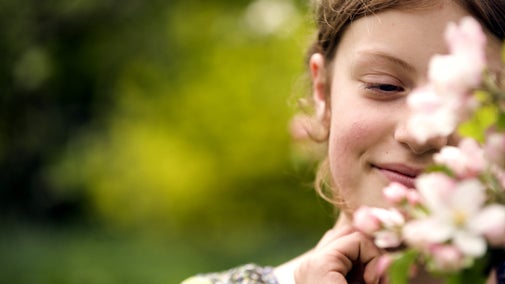
Discover more at Kingston Lacy
Find out when Kingston Lacy is open, how to get here, the things to see and do and more.

Home Farm was established in 1885. Ralph Bankes, the last member of the Bankes family to own Kingston Lacy, was passionate about the farm’s Red Ruby Devon cattle; when he bequeathed the estate to the National Trust in 1982, he stipulated that the herd should be retained. Ralph particularly liked the breed’s impressive horns, and today we leave the horns on the females to preserve this tradition.
It’s the oldest pedigree herd in the world, and we consider it part of our 'living collection' – just as important as the fine art and architecture that make Kingston Lacy so famous. Home Farm is still a working farm, but the animals now play a different role.

The Red Devon cows are a tough working breed, but also gentle and docile. Known for their russet-red colour and thick coat they are often nicknamed the ‘Red Rubies’.
Kingston Lacy’s herd splits its time between Home Farm during the winter and the parklands and vast estate during spring and summer.
The cows are a key part of the conservation work on the estate. As a lightweight breed the cattle are ideal for conservation grazing, keeping in check invasive species such as gorse and heather on environmentally sensitive sites such as Badbury Rings and Holt Heath.
If you are walking your dog out on the estate, please be a responsible dog owner, keep your dog under close control and pick up your dog's poo – it can be fatal to livestock.

It's not just the Red Devon cattle that are used for conservation grazing. In 2018 the rare but ancient breed of Portland sheep were introduced to Kingston Lacy. You're most likely to see them in the parkland or paddocks around Pamphill – look out for the Portland lambs in the spring, which are distinctively dark in colour (and utterly adorable to watch).
These animals are an important part of how we manage the estate today. Portlands are small and hardy, the perfect breed for conservation grazing as they can thrive on rough vegetation and sparse grazing – so are able to graze areas which are unsuitable for the Red Devons.
Portland sheep help Kingston Lacy manage habitats such as wood pasture and wildflower-rich hay meadows: by carefully controlling grazing factors such as time of year, duration and number of animals, the sheep help these habitats support a wider variety of plants and wildlife.

Find out when Kingston Lacy is open, how to get here, the things to see and do and more.

Relax and wander the gardens to enjoy seasonal interest at any time of year, with plenty of space for children to run, skip and play, and spaces to stop along the way.

Find out more about the Bankes family home. Discover art treasures and look at how a large home was used by the family and their visitors who came to stay.

Enjoy nature and fresh air on woodland walks across the Kingston Lacy estate in Dorset, and find out all you need to know about visiting with your four-legged friend.

A vision from Venice nestled in a pocket of Dorset. Read about Kingston Lacy’s most influential owner who made it the important place you see today.

Groups of visitors are warmly welcomed by the National Trust at Kingston Lacy. Find out more about booking your tickets and the benefits you’ll get.